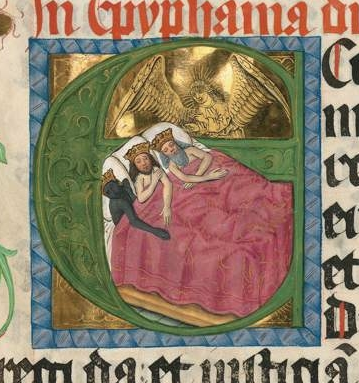Although it is commonly accepted today, especially in Europe, that one of the Three Kings is Black, this was not original to the tale. In fact, it was only in the Middle Ages that the Kings were named in western Christianity as Melchior, Balthasar, and Caspar, although commentators could not agree on who came from which lands. By the thirteenth century texts were variously specifying that they had come from Persia, India, Arabia, the Mediterranean, Nubia, Sheba, and other legendary lands, but in visual terms a Black Magus did not appear until the fourteenth century, and it only became commonplace after 1500.
The legend of the Three Kings, also known as the Three Magi or the Three Wise Men, is based on a very brief reference in Matthew 2:1-12, which notes that an unspecified number of “Magi”–the word used in the original Greek referred not to kings but rather to spiritual figures, practitioners of mystical arts–came from the east to worship the King of the Jews. Having followed a star, they came to King Herod and told him that it had been prophesied that a child would be born in Bethlehem. Herod told them to seek out the child and report back to him so that he too could worship, although he actually intended to snuff out a perceived threat.

The Magi found Mary, Joseph, and Jesus and presented their previous gifts of gold, frankincense, and myrrh–the number of gifts explaining the presumption of three Magi in western Christianity, while eastern Christians counted twelve. Having been warned in a dream to avoid Herod, they returned to their homeland by a different route.
All other features of their legend–their royal status, their origins, the wonders that brought them to Bethlehem, and their missionary work after they left–were constructed by later writers to explain the significance of pagans coming to worship the Christ child. While the broad outlines of the legend were more or less agreed-upon by the Middle Ages, nevertheless many of the details remained confused and contested, between western and eastern Christianity and also within each tradition.
It is in this context that we can see the significance of Memling’s painting. Not only does his work reflect many of the conventions that would define the Black Magus–his youth, his flashy dress, his noble bearing, his exotic attendants, his positioning to the side, even a fluttering standard referring to St. Maurice–but the painting itself was a means by which these conventions diffused across central Europe. What had previously been a practice specific to a few areas, most notably the area around Cologne where Memling had apprenticed, was taken by him to the Low Countries. His prominence in Bruges helped to draw attention to this trend and diffuse it more widely.
Jeff Bowersox
Deutsch

Source: Hans Memling, Triptych of the Adoration of the Magi (1470-1472), Museo del Prado Madrid.

Hans Memling, Adoration of the Magi (1470-1472) by Jeff Bowersox is licensed under a Creative Commons Attribution-ShareAlike 4.0 International License. Permissions beyond the scope of this license may be available at https://blackcentraleurope.com/who-we-are/.
